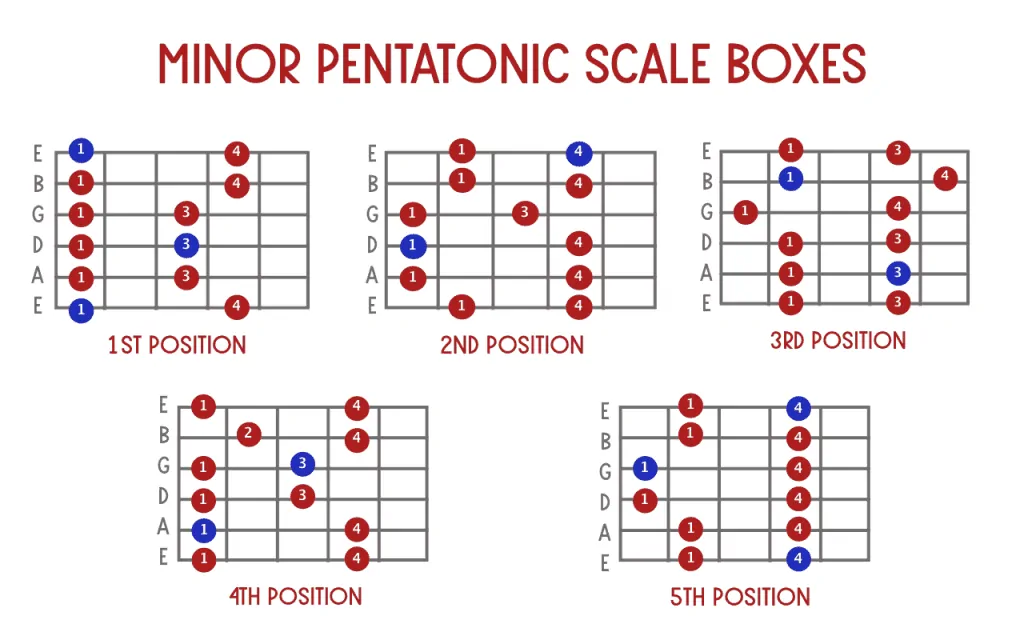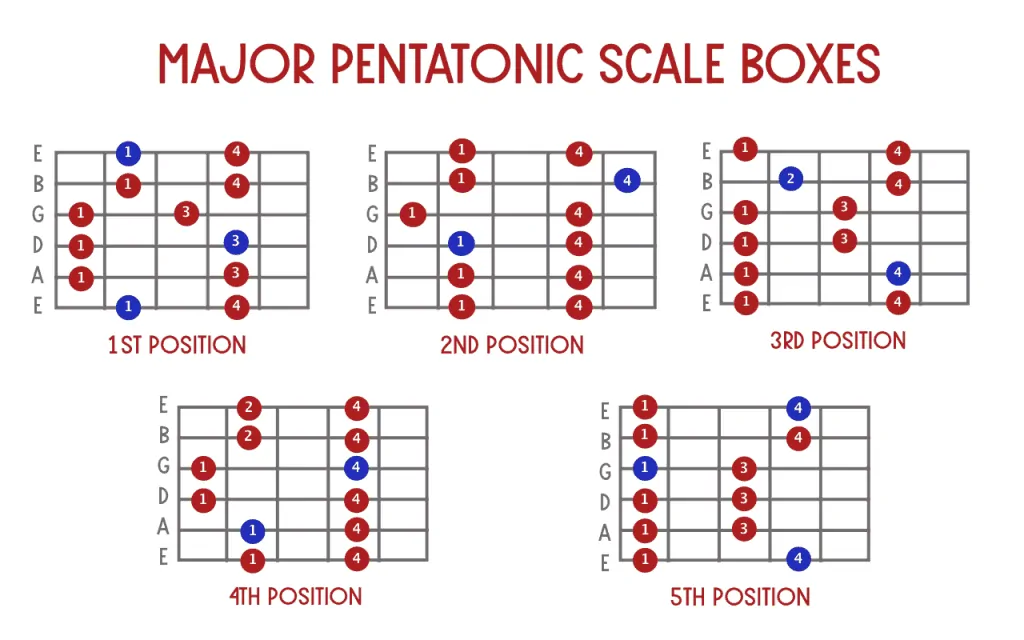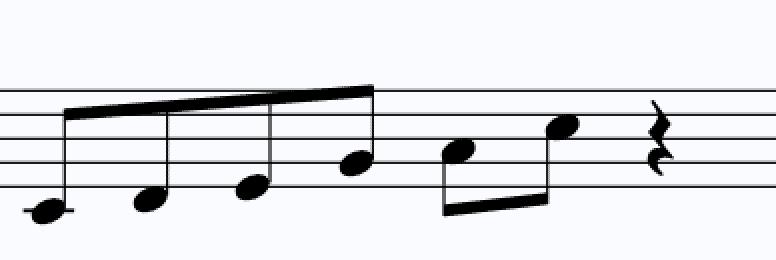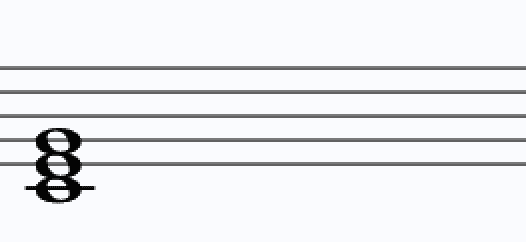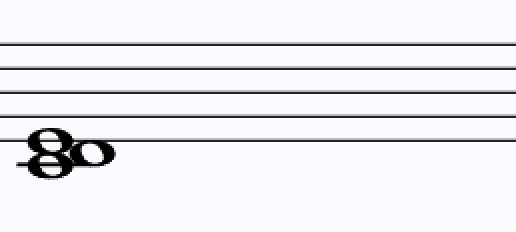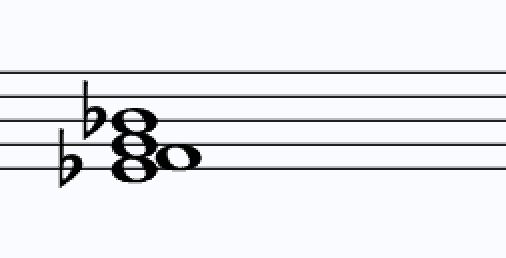At BeginnerGuitarHQ, we like to guide you through the perfect way to play guitar. This covers everything from getting hold of the right equipment to learning the theory behind what you’re playing. In this guide, we’re going to teach you everything you need to know about the pentatonic scales and how to use them to your advantage.
In this important guide, we’ll take you through the pentatonic minor, pentatonic major and the related skills you’ll need to use it.
If you’re on the lookout for a simple way to guarantee a nice melody or a beautiful chord sequence, then look no further.
The guitar neck is made up of different scales and within those scales are different notes. Learning how to play scales is vital to a guitarists understanding of chords, music theory, and when creating riffs of your own. Scales are versatile and can help you improve your guitar skills in many areas using different exercises. Below, we will look at these exercises and explore one of the many scales going up and down the guitar neck: the pentatonic scale.
First Things First
What Is A Scale?
The most important first thing to be aware of when approaching the Pentatonic Scale, is what a scale actually is. In general, a scale is simply a series of notes arranged by pitch. In general, scales can be ascending or descending, and mean the same thing either way (though we’ll look at the melodic minor scale in a future guide, as this one changes when ascending and descending). Many scales are just the notes of a key organised into a row. For example, the D Major key is made up of the notes D, E, F#, G, A, B and C#, so the D Major scale is simply these notes arranged in ascending/descending order.
There Are A Lot Of Scales
Today, we’re looking at the Pentatonic Scale (which we’ll get to in a moment) but there are hundreds more scales in existence. One way to look at scales is to imagine a piano. The white notes from C-C make a simple C major scale. Move up to D, and if you simply go from D-D without hitting a black note, you’ll be playing the Dorian mode.
The important thing to remember when considering scales is that they can be transposed with ease. For example, a C major scale is built on a set of distinctive intervals that can be lifted and placed elsewhere to create a D major scale. Similarly, a D Dorian mode can be reduced to its intervals and moved anywhere to create the Dorian mode on any other note.
What Is A Minor Scale?
A minor scale is any scale (well, almost any, but don’t worry about that right now) scale that has a minor third and a minor seventh. Of course, there are a variety of complex modes where these rules change somewhat, but these are a couple of general pointers to keep in mind when identifying minor. The easiest way to hear a minor scale is to look out for a general ‘sad’ tone.
And What Is A Major Scale?
A major scale can be identified by the opposite methods to that of the minor scale. This means the easiest ways to hear a major scale is to listen out for a happier sound, while using major seventh intervals and major thirds.
Meaning of pentatonic
You will find that most scales encompass 7 notes, this is called a heptatonic scale, the pentatonic scale, however, only encompass 5 notes. This makes the pentatonic scale a valid starting scale for beginners as there are less notes to remember in the scale pattern. It is also beginner friendly because it can be played over any chord change as long as you play the scale in the right key. Should you wish to make up a nice melody to a guitar comp, the pentatonic scale is a good place to start.
Another funny anecdote that might explain the naming of the scale better is that penta is a loanword from greek that means 5, just as hepta which means 7.
Minor and Major pentatonic scale
The pentatonic scale can be defined by its name. The ‘pent’atonic scale has five notes per octave, as opposed to the ‘hept’atonic seven notes found in most traditional Western scales. Of course, this means that technically any scale with five notes is by default a pentatonic scale, but there is also a specific scale referred to as the pentatonic scale.
The differentiation between types of pentatonic scales falls to whether they include semitone movement or not, and the type we’ll be focusing on (anhemitonic). This effectively removes the possibility for dissonance within the scale, as the tritone interval and semitone changes are removed, allowing only for smoothness.
An interesting way of remembering a certain iteration of the minor pentatonic scale is by approaching it from an Eb perspective while looking at a piano. This version is made up of the black notes on the piano and nothing else. Technically you could smash your hand down onto a piano and only play black notes and you’d be using the Eb minor pentatonic.
For ease, however, we’ll be looking at the pentatonic scale using C as our starting point. This means you have a set of five notes to remember: C, Eb, F, G, Bb.
Minor pentatonic scale
Minor Pentatonic
The pentatonic scale comes in two keys/variations: Minor and Major. These variations can be used to apply the scale to different keys and musical styles depending on what kind of sound you want to create. Learning both of these will aid you in your understanding of the relation between notes on the guitar neck and how to quickly find the note you want.
Below you will find scale boxes for both Major and Minor. The boxes show the specific scale pattern as it moves on the guitar neck. No matter what key you play in the pattern will always be the same. For instance, if you play A minor pentatonic scale the first fret will be the 5th fret on the first position, while if you play C minor the first fret will be the 8th fret on the first position.
The numbers on the scale boxes are the finger you will use to play that note e.g. 1 being your index finger and 4 being your pinky finger. The blue notes are the notes naming the key of the pentatonic scale, for example should you play the A minor pentatonic scale all blue notes will be A.
Let’s have a look at the scale boxes and discuss them one scale at a time to get a clearer understanding on how they work.
The Minor pentatonic scale boxes.
Minor
The minor pentatonic scale is usually what people mean when they simply say “the pentatonic scale” as it works well over any chord. Above you see the scale boxes for the minor pentatonic scale as they progress up the guitar neck. To figure out where to place the scale boxes you need to look to the blue notes. If you wish to play A-minor pentatonic scale all blue notes has to be A. Looking at the 1st position of the scale boxes you will find the blue note As on the 5th and 7th fret; the 1s on the 5th fret and the 3 on the 7th fret. Looking at the next scale box, the 2nd position, you will see that the first 2 frets of the scale box overlap in pattern with the 1st position’s 3rd and 4th fret, we can then assume that the 2nd positions 1st scale box fret will be the 7th fret on the guitar neck.
It can be a bit overwhelming when looking at it like this but in my experience it slowly starts to make sense as you put it to practice. Focus on the 1st position first and move on to the next position as you get comfortable using the scale box. The more time you put into learning the scales properly the more you will be able to utilize them in actual play.
A-minor pentatonic is a reasonable starting place with the minor pentatonic scale and has the 5th, 7th, 9th, 12th, and 14th fret respectively as the first fret on the different positions.
Here is a video that shows how to play the pentatonic scale in its 1st position across the guitar neck and how to use it.
The Major pentatonic scale boxes.
Major Pentatonic
The major pentatonic scale works just as the minor pentatonic scale when it comes to understanding and using the scale boxes. If you want to play A-major pentatonic scale all the blue notes has to be A. In the 1st position then it means that the 2nd fret on the scale box would be the 5th fret on the guitar neck as that makes all the blue notes A. In the 2nd position, the 2nd fret in the scale box will be the 7th fret on the guitar neck.
A-major pentatonic scale as a starting point can be found on the 4th, 6th, 9th, 11th, and 14th fret respectively as the first fret on the different positions.
The major pentatonic is just as simple and easy to understand as the minor. It also has five notes and is another anhemitonic scale, meaning it avoids the potential dissonances of involving any tritone or semitone movement.
There isn’t a way as simple to remember for the major pentatonic scale as there is with the minor, so we can go straight into learning the five notes you’ll need to have a comfortable grasp over to create the pentatonic scale on C: C, D, E, G, A.
Major pentatonic scale
Transposing The Pentatonic Scale
In short, the idea behind transposing a scale is to move it from one place to another while retaining the same intervals, and thus, the same sound from the scale. If you’ve learned something in the C major pentatonic, but your vocalist can’t get to low enough notes to sing it correctly, you may need to transpose it up to a higher key.
The easiest way to learn how to transpose is to find out what the interval between each of the notes in a scale is. This way, when you move the notes, you’ll be able to check that they’re all in the right place based on their intervals. Then, you can simply move each note of scale up by the same amount you moved the first note up. For example, if you were moving from C pentatonic to Eb, you’d have moved the C up by a minor third. This means you should move the D up to the F, the E up to a G and so on.
The pattern of intervals found in a Major Pentatonic scale is: Tone, Tone, Minor 3rd, Tone, Minor 3rd.
In C, this means you move by one tone from C to D, then another from D to E. Then you jump up by a minor 3rd to G, move by another tone to A and then finally jump by a minor 3rd again to get you back to C.
The pattern of intervals found in a Minor Pentatonic scale is: Minor 3rd, Tone, Tone, Minor 3rd, Tone.
In C, this means you move by a minor 3rd straight up to the Eb, then by two tones taking you to F and then to G, then you’ll jump by a minor 3rd again to land on the Bb, and then one final tone to take you back to C.
As such, you can use this exact pattern for each Pentatonic scale to check you’d moved your notes to the right place. Let’s try moving from C minor pentatonic to Ab minor pentatonic. This is a complex one as it makes you move each of your notes up by the large interval of a minor sixth. You first jump is to take your tonic from C to Ab, and then after this you simply need to mirror the same jump. From Eb up a minor sixth, you get a Cb. From F you get a Db, from G you get an Eb, from Bb you get a Gb and then you’re back at the Ab.
Alternatively, you can make the first jump (C to Ab) and then work out the rest of the notes using the interval pattern you’re used to. So in the minor pentatonic, you’d move from the Ab up by a minor 3rd to the Cb, and then by a tone to the Db and so on and so forth…
Using The Pentatonic Major In Melody
Do: Use Its Uplifting Nature
The pentatonic major, just like the standard major scale, is built around an uplifting, positive sound. This is because it avoids jarring intervals and is built around major intervals, which are typically associated to brightness, unlike the darker, tighter minor intervals. Of course, there are still minor 3rds in the pentatonic major, so a certain section of the scale could still sound creepy or dark if you used it in a certain way, but in general, this is a happy scale.
Don’t: Rely Exclusively On It
While the pentatonic major scale is a one of the easiest ways to form a nice, uplifting melody in music, you shouldn’t really write an entire song using the pentatonic; it just makes things a little boring. A lot of bland chart music is built mostly on simple uses of the pentatonic (which can be great and effective in short bursts), which means the intervals within the scale often feel very overused, making a lot of music sound very samey. As such, you might want to stick to using the pentatonic every now and again within a song, and allowing yourself to employ intervals from different scales.
This is furthered by the fact that only using the pentatonic scale can actually end up feeling rather restrictive. The fact that there are only five notes in the scales gives you five different sounds to play with- imagine how much more interesting your melodies could be if you widened that pool? Chuck a semitone every now and again, because it isn’t going to turn your melody into something atonal and inaccessible; chances are it’ll give your melodic content a fresh lease of life.
Do: Use Its Simplicity To Your Advantage
Despite everything said above, there is a charming simplicity to the pentatonic major. There are certain times in which its simplicity is exactly what you need. Perhaps in the middle of a longer, more complex song you want to provide your listener with a moment of accessible melodic catchiness- the pentatonic is one way to make sure your melody is a hit.
Do: Use It To Improvise
One of the best things the pentatonic scale has to offer guitar players is its easy to remember pattern which can be executed quickly and easily across the fretboard. This makes it a brilliant starting place (and for some guitarists, even famous ones, the place in which they’ve built their career) for improvised solos.
Imagine we’re in G pentatonic: place your second finger on the 3rd fret of the 6th string (G) and move up the neck/fretboard using the pattern taught above (Tone, Tone, Minor 3rd, Tone, Minor 3rd). This will take you through a G major pentatonic. 5th fret of the 6th string, 2nd fret of the 5th string, 5th fret of the 5th string, 2nd fret of the 4th string, then land on the 5th fret of the 4th string, which is another G. Continue upwards in the same pattern and you’ve played a full pentatonic major scale. This can be moved up and down the neck depending on what key you need to improvise in.
Using The Pentatonic Major Scale In Harmony
Don’t: Limit Yourself With It
The main thing to remember about the pentatonic major in harmony is that it is very, very rarely used as the exclusive source of harmonic content. When playing pentatonic melodies as above, it is highly unlikely that the accompaniment will be playing chords sourced exclusively from the pentatonic major. Therefore, don’t limit yourself to the pentatonic major when playing chords; it won’t create an extra layer of simplicity like the melody will, it’ll just limit you.
Do: Use Its Major Chord
Despite the fact that the pentatonic scale is very rarely used exclusively to create harmonic patterns, you might find yourself in a situation where you want to take exclusively from that scale to create your harmony. The use of major chords might a little challenging, though.
There is just one major chord in the pentatonic major- the tonic. In C major, that is a C major chord (C-E-G). The fact that this is the only full major chord you can find in the scale makes it a very strong place to finish chord sequences, but the fact that there is no way to form a full chord V might make convincing cadences rather difficult.
Major pentatonic major chord
Do: Use Its Minor Chords
Interestingly, there are more minor chords in the pentatonic major scale than there are major chords. In C, you can combine E and G to create part of an Em chord, and A, C and E to create an Am chord. This gives you more harmonic depth than the use of major chords, but as you might be able to guess, it still leaves you rather limited.
Do: Use Its Interesting Dissonances
It might not be the best idea to force yourself to stick to the major pentatonic for harmonic sequences and the whole idea behind pentatonic scales might be simplicity, but this grouping of notes can create some cool dissonant chords.
Try playing the crunchy combination of C, D and E all together, or make an Emsus4 chord by bringing together E, G and A. Maybe even play all five notes of the scale at once- it sounds weird, but thanks to the lack of tritones and semitones, there is a distinct jazziness to the cluster. Approaching pentatonic harmony from this angle actually makes it seem like something worthwhile, unlike the use of unfinished, lacking triads.
Dissonances in the major pentatonic
Using The Pentatonic Minor In Melody
Do: Use Its Negative Nature
Much like the major pentatonic, we can use the minor pentatonic to bring out sadness in a melody. This is down to the use of minor intervals between important notes. The three easiest ways to create sadness in a minor pentatonic melody are to use the minor 3rd that connects the C to the Eb (this is the interval that defines this scale as minor); the minor 3rd that connects the G to the Bb (this is the interval that creates a minor chord V); and the tone leap that connects the Bb to C (if this was raised, it would create a leading note and a major third interval.
Don’t: Rely Exclusively On It
Again, as with the major pentatonic, you shouldn’t force yourself into being limited by this scale. It only has five notes, which really impacts what you can do with it. If you’re playing a melody and you want to move up by a semitone, just do- don’t feel like you ‘can’t’ because there is no semitone movement in a pentatonic minor scale.
On top of that, the lack of notes in this scale can add further to the idea that the pentatonic scale can be very boring in certain contexts. You don’t want to write a song that only uses the pentatonic minor to form its melodies because it simply doesn’t give you enough variety.
Do: Use Its Simplicity To Your Advantage
Having said that, there are many, many songs that use the minor pentatonic to go off on a catchy tangent. As with the major pentatonic, you might feel that the perfect place to use the scale is in the middle of a moment of complexity, in order to give your listener a simple, catchy break.
Do: Turn It Into A Blues Scale
Now technically as soon as you turn a pentatonic scale into a blues scale, it stops being a pentatonic scale. It no longer only has five notes, and no longer avoids semitone movement. However, the two are incredibly closely linked.
The definition of the term ‘blues scale’ is rather flimsy, as some would argue that it involves both a major and minor third, while others would suggest it was the addition of the tritone that create the bluesy feeling; as such, you can basically decide whether to use either, or both. In the C minor pentatonic, try moving from Eb up to E to create a bluesy slide, and try connecting the F and G by incorporating an F# between the two. This is an invaluable scale for use both in improvisation, and full melodic content.
Blues scale
Using The Pentatonic Minor Scale In Harmony
Don’t: Limit Yourself With It
The use of harmony with the pentatonic minor is built on basically the same set of rules as the use of pentatonic major harmony; it’ll really restrict you if you attempt exclusively use it. Broaden your harmonic range, even if you’re playing pentatonic minor, and bring in notes that aren’t one of the five. Otherwise, you simply don’t have access to enough chords to create proper chord sequences.
Do: Use Its Minor Chords
If you really want to stick to the pentatonic minor, however, then you’ve got just a couple of options for minor chords. In C minor, you can create your entire minor tonic triad, and make up the first half of a G minor chord.
Do: Use Its Major Chords
The same problem arises for major chords, in that you can’t form very many of them. In fact, you can create an entire Eb major chord, and that’s it.
Don’t: Shy Away From Dissonance
Again, just like you can with the pentatonic major, the pentatonic minor also gives you an excellent control over interesting dissonances if you want to stick to an exclusively pentatonic sequence. Playing the aforementioned Eb major chord and adding an F will give you an interesting Ebadd9 chord, while the Cm7 chord exists naturally within this scale. Interestingly, the suggestion to simply play every single note in the chord works just as well with the minor pentatonic as it does the major, because the intervals are the same when played together.
Dissonance in minor pentatonic
Examples Of The Pentatonic Major Scale In Use
- Rednex – Cotton Eye Joe. There is a 100% chance you’re familiar with this particular track. The danceable one-hit wonder is as catchy as anything, so it’s no surprise that the song was written mostly in the pentatonic major. There are a few bent notes in the vocal melody that lean towards a blues scale and the occasional movement away from pentatonic in the fiddle, but in general, this track sticks to simplicity.
- The Beatles – Let It Be. One of the most famous songs by one of the most famous bands of all time is another track mostly composed around the pentatonic major. Of course, The Beatles are known for revolutionising music in many ways, but many of their tracks are built on delightfully catchy simplicity.
- Pink Floyd – Wish You Were Here. Pink Floyd are known for some incredibly complex, genius compositions, but sometimes all it takes is simplicity. David Gilmour’s guitar work on ‘Wish You Were Here’ isn’t restricted exclusively to the pentatonic major, but the majority of it is centred on the simplicity of just five notes.
Examples Of The Pentatonic Minor Scale In Use
- Pink Floyd – Another Brick In The Wall Part 2. Returning to Pink Floyd straight away, their iconic track ‘Another Brick In The Wall Part 2’ has a main melody which almost exclusively uses notes of the pentatonic minor. Interestingly, these theme returns throughout The Wall many times, showing how simplicity can be evolved into something complex and brilliant when used well.
- Led Zeppelin – Rock And Roll. Led Zeppelin are known for taking a lot of influence from the blues, and their track ‘Rock And Roll’ continues that trend. Much of it is built around the pentatonic minor, but with many of those ‘blue’ notes mentioned above thrown in for good measure.
- Tenacious D – Tribute. The comedy rock band fronted by Jack Black and Kyle Gass, Tenacious D, place humour above complexity in many of their tracks; as such, their most famous release uses melodic content that takes mostly from the pentatonic minor scale during its most memorable moments.
Scales Related To The Pentatonic Scales
- Whole Tone Scale. The whole tone scale doesn’t have a lot of connection to the pentatonic in terms of sound, but there is a distinct theme in its organisation that connects the two. While the pentatonic has five notes, the whole tone scale has six, and they all make sure to avoid semitone movement. In fact, the distinctive sound of the whole tone scale is created by the fact that each note is consistently separated by one whole tone. This means semitone movement is avoided, but tritone intervals are incidentally found connecting each note.
- Japanese Scale. The Japanese Scale (also known as the Japanese mode) is a five-note pentatonic scale which has a lot of similarities to the standard pentatonic scale. It organises itself into a pattern of: major second, minor second, major third, minor second, major third. If you’re in C then you’d have the following notes: C, D, Eb, G, Ab, C.
- Blues Scale. As we have mentioned above, the blues scale is something that has a lot of relation to the pentatonic minor. The traditionally accepted version of the pentatonic minor scale is simply a minor pentatonic with a b5/#4 added in the middle. This turns it into a six-note scale. Remember that there are also variants of the blues scale that use the 3rd as the place to add a blue note. This could be the introduction of a major 3rd in a minor scale, or the introduction of a minor 3rd into a major scale.
Scale exercises
One way to better familiarize yourself with the scale boxes and the pentatonic scale overall is to do scale exercises. They do not only make you more comfortable playing the pentatonic scale, they also help you improve the dexterity in your fingers. As you start out you might find it easiest to focus these exercises on one scale box and one scale. In my experience, the most commonly used is the A-minor pentatonic scale in its 1st position. All examples below will therefore be in set in that position. If you do not know how to read guitar tabs you will find a helpful article here.
Double, triple, and quad picking
In this exercise you pick every note two, three, or four times before moving on to the next note. Start slow and increase in speed as you get used to the exercise. I would also advise to begin with the double picking as shown in the tabs below, and then move on to triple picking, and finally quad picking.
Double picking ascending exercise.
Triplets ascending
This exercise progress through the scale in threes. You play three notes in the scale, go back one note, and then play the three next notes. This then repeats going up the scale. Start slow and increase in speed as you feel comfortable.
Triplets ascending exercise.
Note skipping
So far you might have played the pentatonic scale up and down in different ways following its note pattern rigorously. This exercise helps you break up the scale and jump between the notes rather than play one after the other. You will play each note of the scale in succession, but instead of directly playing the next note you instead skip that note and play the one that comes after. You then go back to the note you skipped and repeat the pattern.
Note skipping exercise.
Hopefully, this article has helped you achieve an understanding of how the pentatonic scale works and how it can be useful to you when learning how to play the guitar. Take it slow and you will soon understand the intricacies of guitar scales.
Conclusion
The pentatonic scales give you access to a lot of simplicity, while helping you to form pleasant melodic lines from a variety of angles. We don’t want you to force yourself into a hole that limits your creative output, and as such we don’t suggest an addiction to the pentatonic that makes your music sound repetitive, but we do reiterate how helpful it is in things like: creating a moment of catchiness, learning to improvise and bringing out uniquely dissonant chords.


